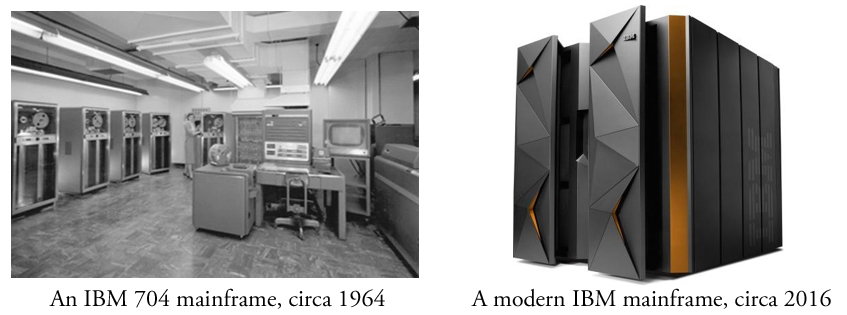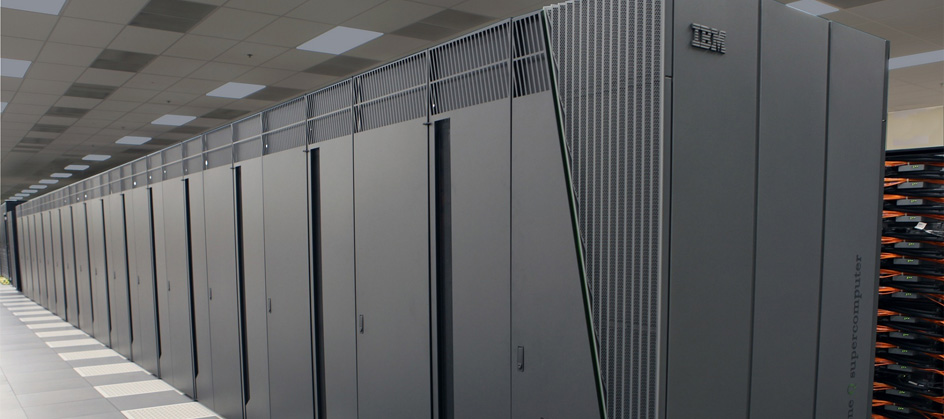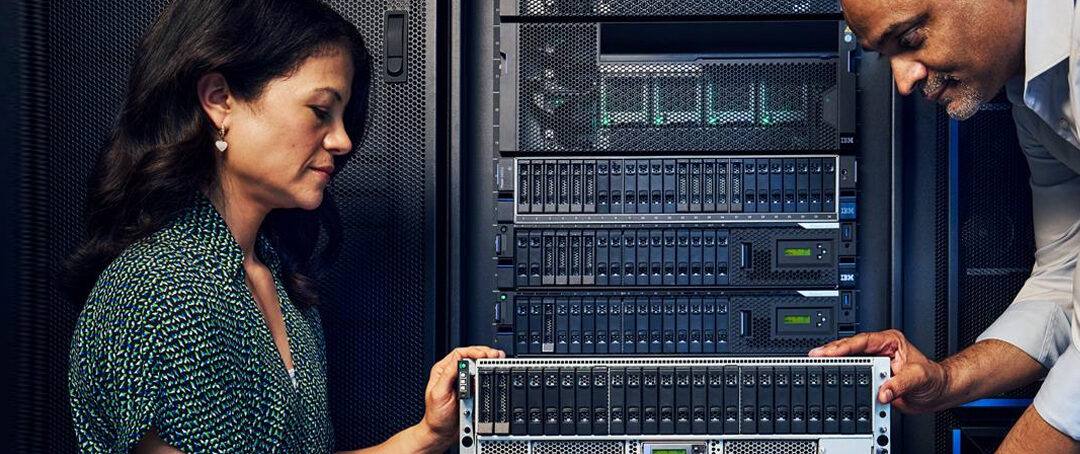Many of you may be thinking why on earth am I even suggesting this? Hybrid cloud computing offers flexibility, fault tolerance, subscription-based cost models, and much more. While that’s all true, it simply does not fit everyone’s business model. Let me explain.
Many years ago, we had onsite IT computer rooms containing static servers and other hardware mountain stockpiles. Then came the dawn of virtualization, and companies such as VMware were born. These companies consolidated multiple servers onto fewer, bigger servers running virtual servers in a multi-tenant way. Software virtualization paved the way for a virtual server that could be placed anywhere (with a little help from network connectivity), and external services housed out of large data centers became the norm. “So, tell me something I don’t know!” I hear you groan. But what I haven’t mentioned is that hardware that isn’t easily moved shouldn’t be moved, and it is that very hardware that is often misunderstood: mainframe technology.
I often write about mainframe technology. I am big advocate of mainframe infrastructure for many reasons, but let’s put it into context and position this correctly before you leave this page and surf somewhere else.

I know what you are thinking, but this is not an advertisement for IBM or any other mainframe vendor, just a plain and straightforward way of looking at how technology can be consolidated—which also happens to be a major benefit of hybrid cloud computing. In my opinion, mainframe technology is all about speed of transaction and scale, and that is why most of the biggest banks, retailers, insurers and other large corporations utilize them. Yes, you can use inexpensive hosted resources to achieve some of the same capabilities. But if your business demands unrivalled throughput of transactions and security that’s built in at the hardware level—plus redundancy built into virtually every hardware element by design—then why would you?
Given how quickly both technology and consumer demands evolve, keeping bespoke technology up to date is not easy and not without its challenges. But mainframe infrastructure today has never been so relevant. In the banking and finance sectors, mainframes account for 68 percent of IT production workloads, but only 6 percent of IT spending—is that not amazing? (Source: Solitaire Interglobal.)
Mainframe capabilities
- Big Data – Store, analyze and report on masses of data for many uses
- Internet of Things – Manage millions of devices at the touch of a button instantly and consistently
- Disaster Recovery – Offer redundancy for internal IT services that external clients rely on
- Scalability – Handle peak seasonal periods and provide scalable expandability without migration costs
- Security – Provide absolute security of IT systems, something that’s never been more important than today
These are but a few of the needs the technical world is focusing on today. Mainframe technologies can cater to and deliver on all the above, and more, with hybrid elements. Yes, you did hear that right: a mainframe can now have hybrid connectivity with other hosted environments that can act as replication partners, offer burstable capacity overspill, and more. But, coming back to my original reference to VMware, what about making one of the world’s most cloud-ready infrastructures do even more for you?
Just as virtualization gave us more to run on a slightly bigger infrastructure, why not do the same for your mainframe? While there are a multitude of vendors that provide optimization services for current architectures like the x86, little is known about doing the same with mainframe technology. Wouldn’t it make sense to look at that first—before jumping into hybrid IT services that will require the management of multiple vendors? By optimizing your workloads, you have the ability to:
- Process over a billion mission-critical transactions per second, every day
- Accelerate application processing by up to 98 percent
- Seamlessly integrate data on both mainframe and distributed systems
- Enable big data and analytics in multi-platform environments
- Enable increased control and flexibility through sub-capacity pricing in R4H soft-capping environments
These are mind-blowing capabilities for mainframe environments, and they are available today. I caught up with Allan Zander, CEO of DataKinetics, a global leader in data performance and optimization solutions:
“For the last four decades, mainframe technology and the IT systems that rely on them have been seen as technology that’s ‘hidden away.’ But you really don’t need to be concerned about some of the stigma the mainframe may suffer from— much of it is just misinformed FUD. The mainframe is actually an extremely cost-effective computing platform, and the skills to provide the solutions you need are readily available in today’s graduates. Optimizing what you have and then considering a hybrid approach can literally save you billions of dollars!
“You can run applications on z/OS that require the most reliability and scalability the mainframe has to offer but, for those applications that perhaps do not require top-level resilience, you can run Linux on your mainframe. And now, with the most powerful, scalable, secure and fault-tolerant technology available—offered by a major player in the open-source community—you have to look at this tech for the future of your business.”
The technology is more open than ever before and my point is this: Shouldn’t you get the most out of what you have—before investing in something else? If you have a mainframe, optimize, and get the most out of it first, before looking around; if you don’t, will you really get the performance, reliability and security you demand elsewhere?
Fact: All Fortune 500 IT organizations run both mainframe and distributed LUW applications—on multiple operating systems and hardware platforms—that access multiple types of databases.
A version of this article was originally published on Compare the Cloud.









0 Comments